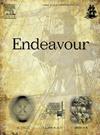维萨里和普利卡特:17世纪南印度的骨骼图像
IF 0.5
4区 哲学
Q3 HISTORY & PHILOSOPHY OF SCIENCE
引用次数: 0
摘要
本文确定了已知的第一个视觉接触实例,即安德烈亚斯·维萨里乌斯(Andreas Vesalius)在伊斯坦布尔以东的《人类公司》(1543)的标志性解剖图像。在印度泰米尔纳德邦的殖民地港口城市普利卡特,两个来自Fabrica的骷髅人为荷兰墓地的骷髅雕塑提供了装饰设计。我们想知道,在17世纪孟加拉湾的一个贸易港口,对那些负责制作这些欧洲解剖学的标志性图像的人和经过墓地的人来说,这意味着什么。本文认为,普利卡特雕塑的视觉解决方案不仅带来了医学解剖学和殡葬建筑的对话,而且还带来了欧洲和德干的艺术传统,最重要的是,早期现代欧洲和印度对人体骨骼结构的视觉化方法有所不同。从欧洲和伊斯兰解剖学、基督教传统的自然神学和死亡纪念,以及南印度,尤其是神秘的苏菲禁欲主义的角度来看,普利卡特雕塑可以被有效地理解为对脆弱人体的沉思的潜在交汇点。本文章由计算机程序翻译,如有差异,请以英文原文为准。
Vesalius and Pulicat: Skeletal imagery in seventeenth-century south India
This article identifies the first known instance of visual engagement with the iconic anatomical imagery of Andreas Vesalius’ De humani corporis fabrica (1543) east of Istanbul. Two skeleton men from the Fabrica provide the design for skeletal sculptures decorating the Dutch cemetery in the colonial port town of Pulicat, in Tamil Nadu, India. We ask what it meant to engage with these iconic images of European anatomy in a seventeenth-century trading port on the Bay of Bengal, both for those who were responsible for their production and for those who passed by the cemetery. This article argues that the visual solutions of the Pulicat sculptures bring into conversation not only medical anatomy and funerary architecture, but also the artistic traditions of Europe and the Deccan, and, most importantly, the somewhat differing early modern European and Indian approaches to visualizing the skeletal structures of human bodies. The Pulicat sculptures can be productively understood as a potential meeting point for the contemplation of the fragile human body from the perspectives of European and Islamicate anatomy, Christian traditions of natural theology and memento mori, as well as South Indian and especially mystic Sufi asceticism.
求助全文
通过发布文献求助,成功后即可免费获取论文全文。
去求助
来源期刊

Endeavour
综合性期刊-科学史与科学哲学
CiteScore
1.10
自引率
16.70%
发文量
19
审稿时长
49 days
期刊介绍:
Endeavour, established in 1942, has, over its long and proud history, developed into one of the leading journals in the history and philosophy of science. Endeavour publishes high-quality articles on a wide array of scientific topics from ancient to modern, across all disciplines. It serves as a critical forum for the interdisciplinary exploration and evaluation of natural knowledge and its development throughout history. Each issue contains lavish color and black-and-white illustrations. This makes Endeavour an ideal destination for history and philosophy of science articles with a strong visual component.
Endeavour presents the history and philosophy of science in a clear and accessible manner, ensuring the journal is a valuable tool for historians, philosophers, practicing scientists, and general readers. To enable it to have the broadest coverage possible, Endeavour features four types of articles:
-Research articles are concise, fully referenced, and beautifully illustrated with high quality reproductions of the most important source material.
-In Vivo articles will illustrate the rich and numerous connections between historical and philosophical scholarship and matters of current public interest, and provide rich, readable explanations of important current events from historical and philosophical perspectives.
-Book Reviews and Commentaries provide a picture of the rapidly growing history of science discipline. Written by both established and emerging scholars, our reviews provide a vibrant overview of the latest publications and media in the history and philosophy of science.
-Lost and Found Pieces are playful and creative short essays which focus on objects, theories, tools, and methods that have been significant to science but underappreciated by collective memory.
 求助内容:
求助内容: 应助结果提醒方式:
应助结果提醒方式:


